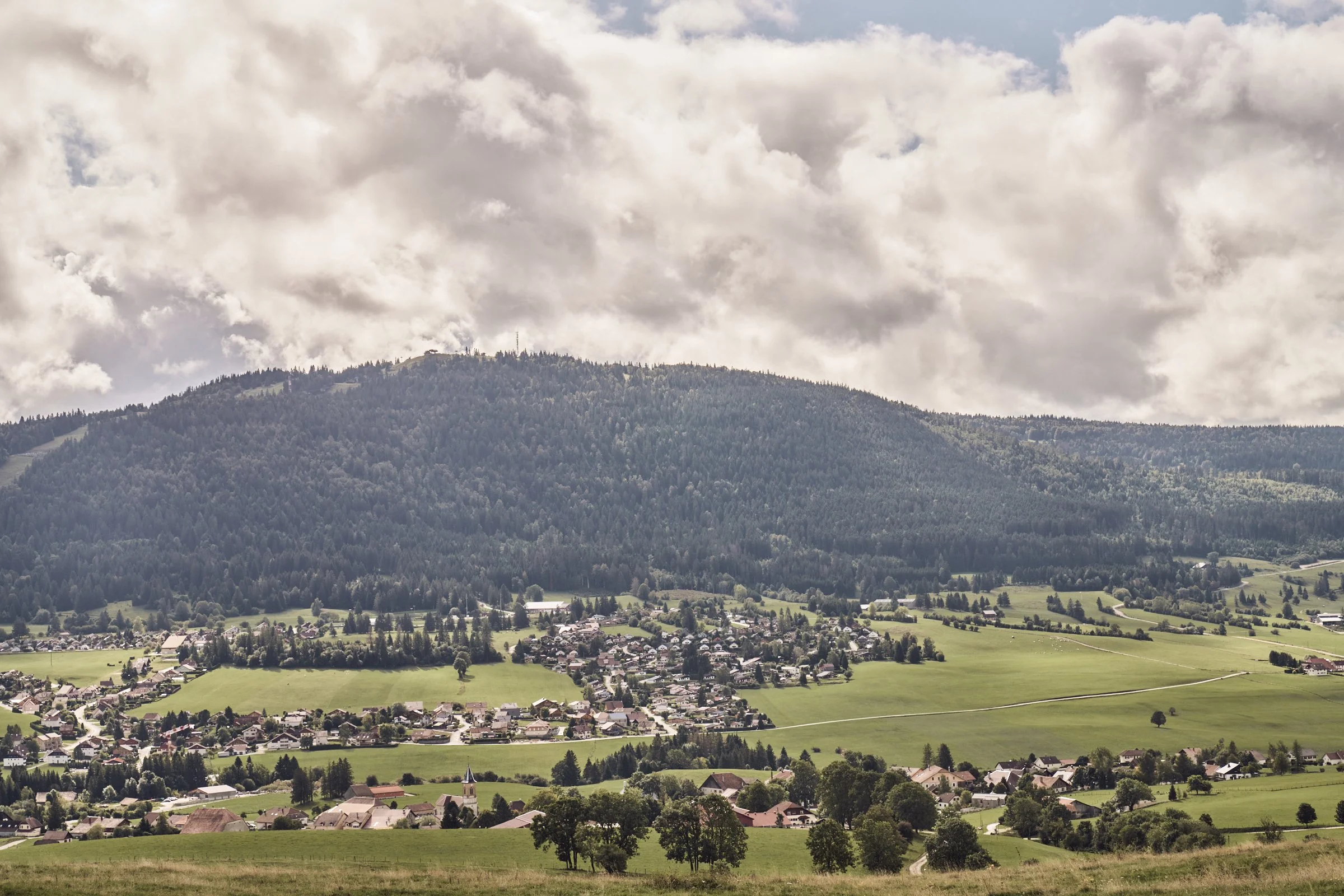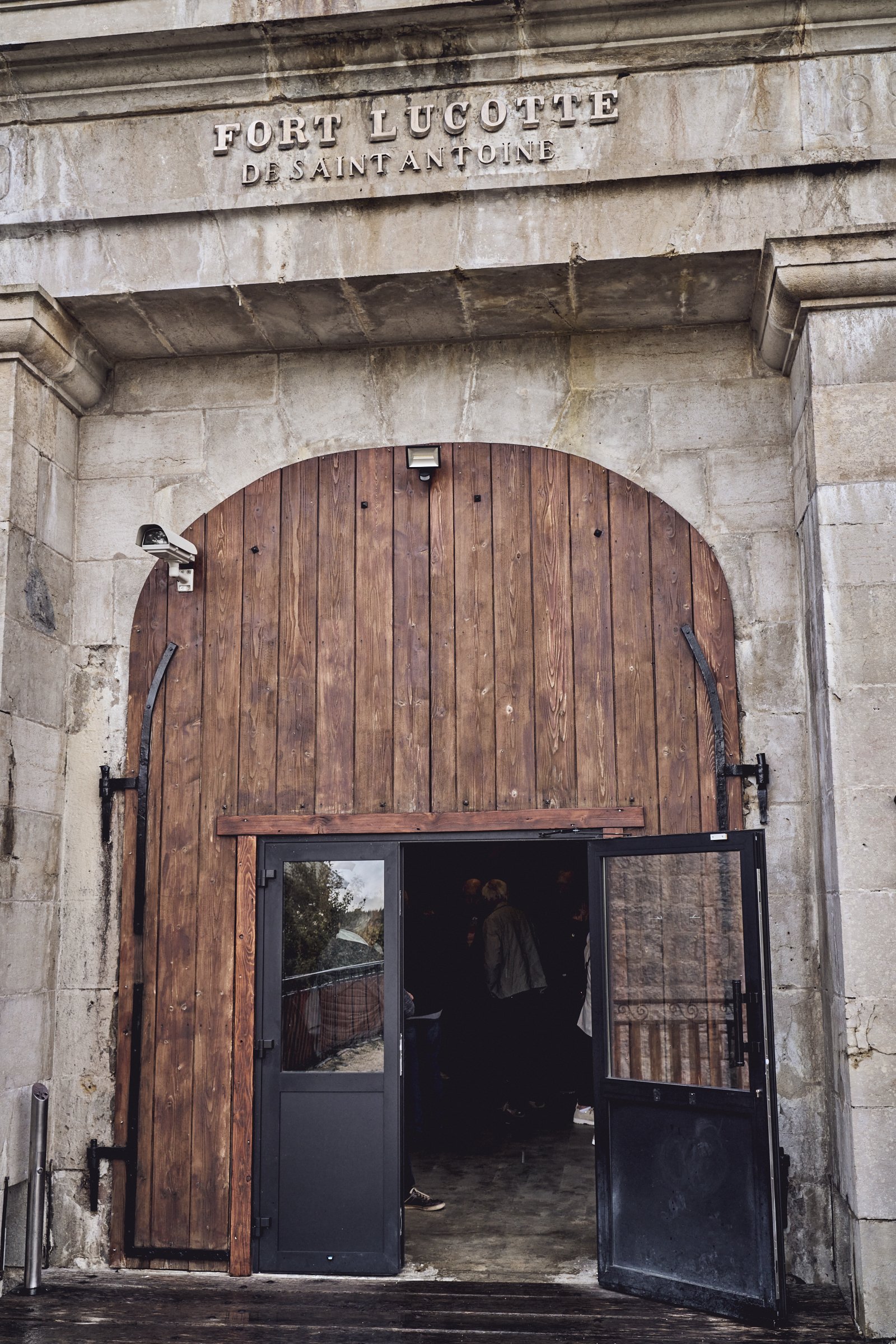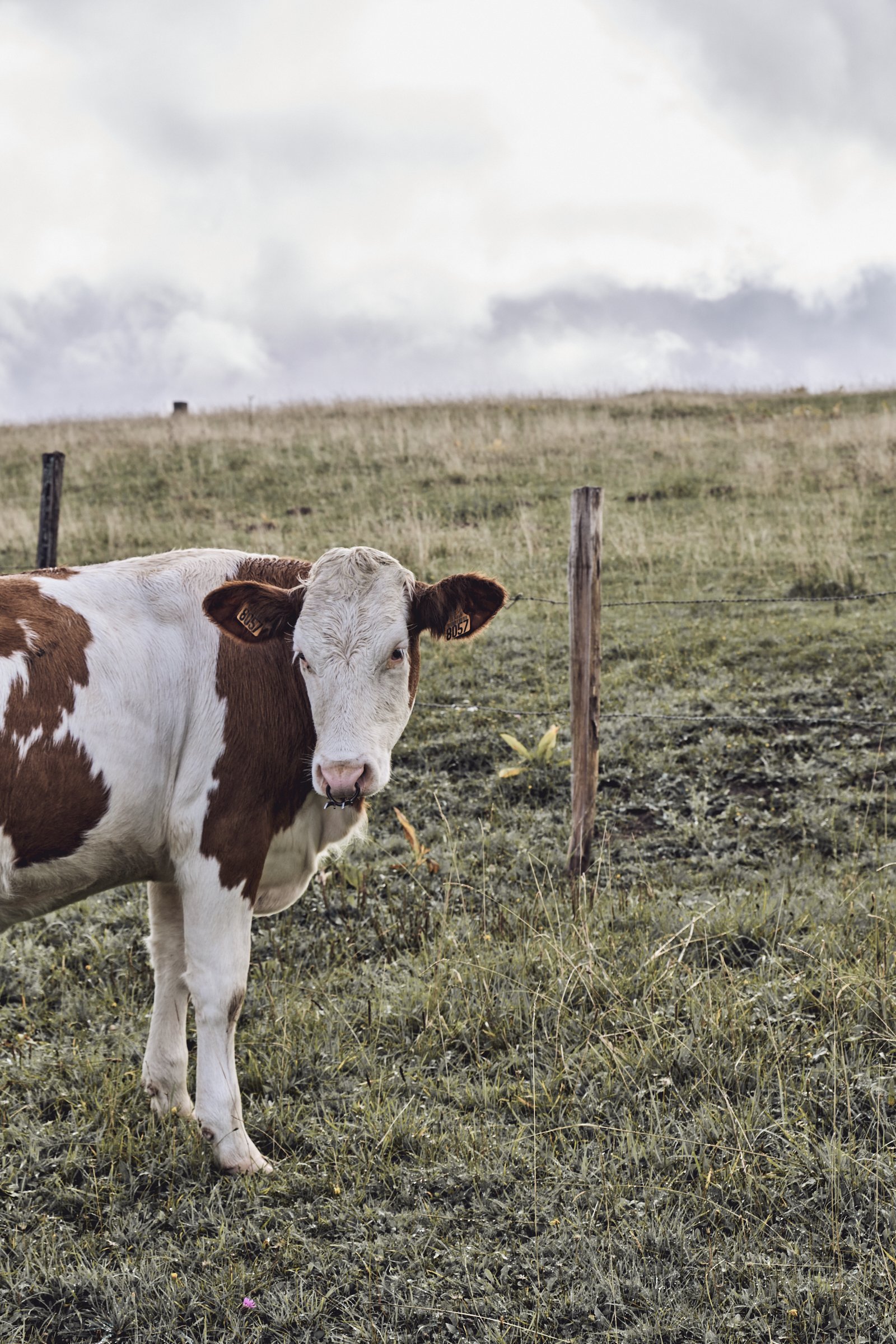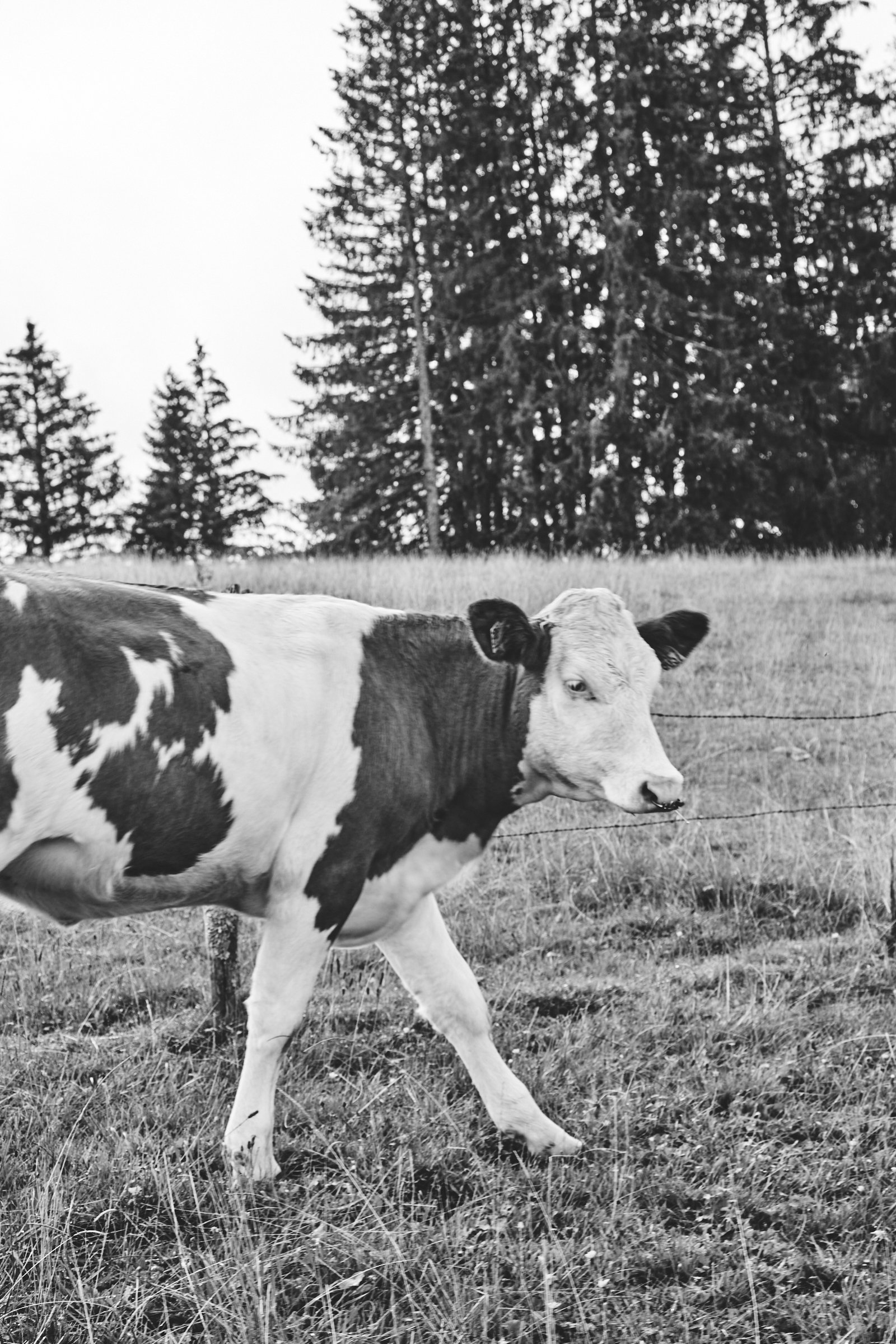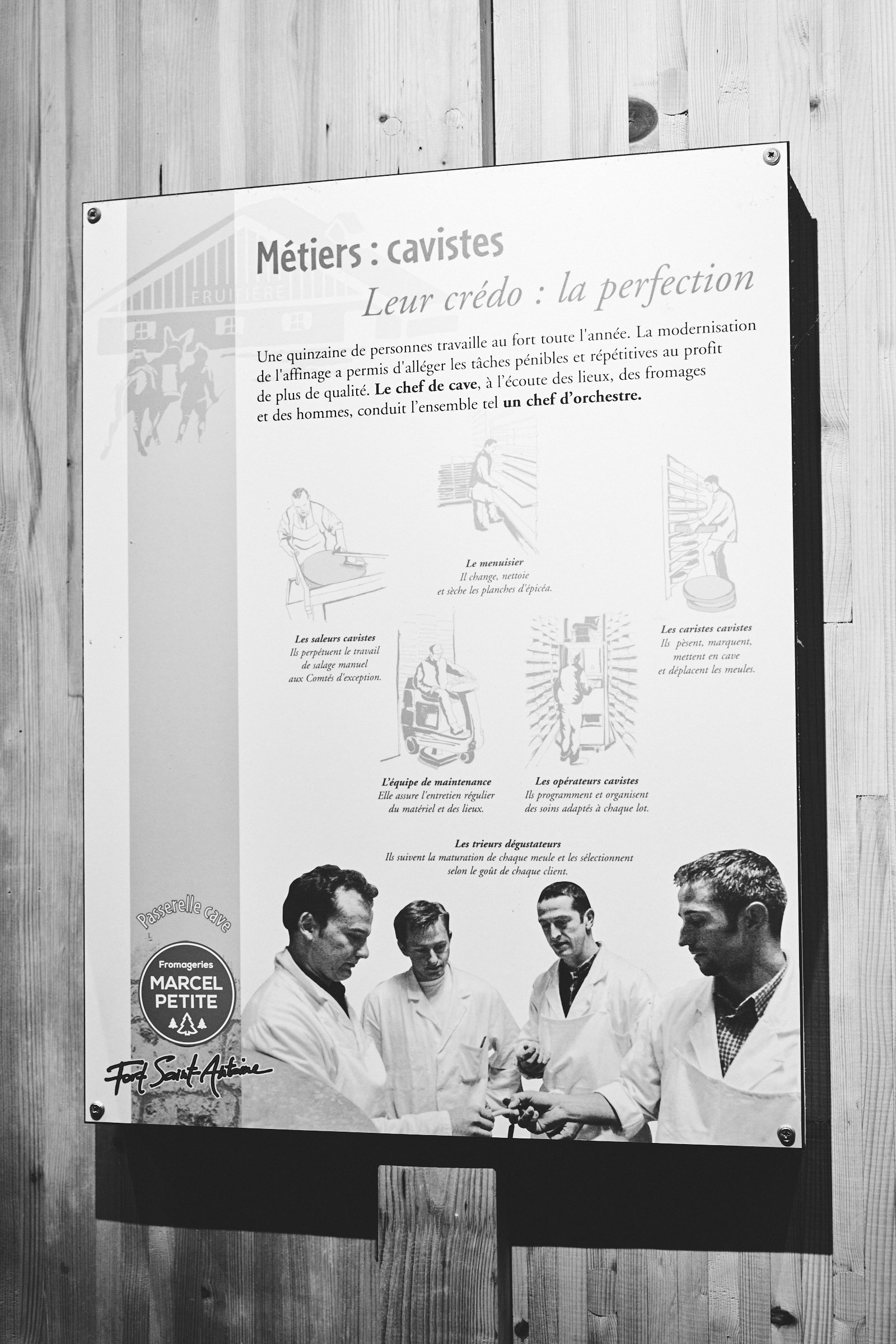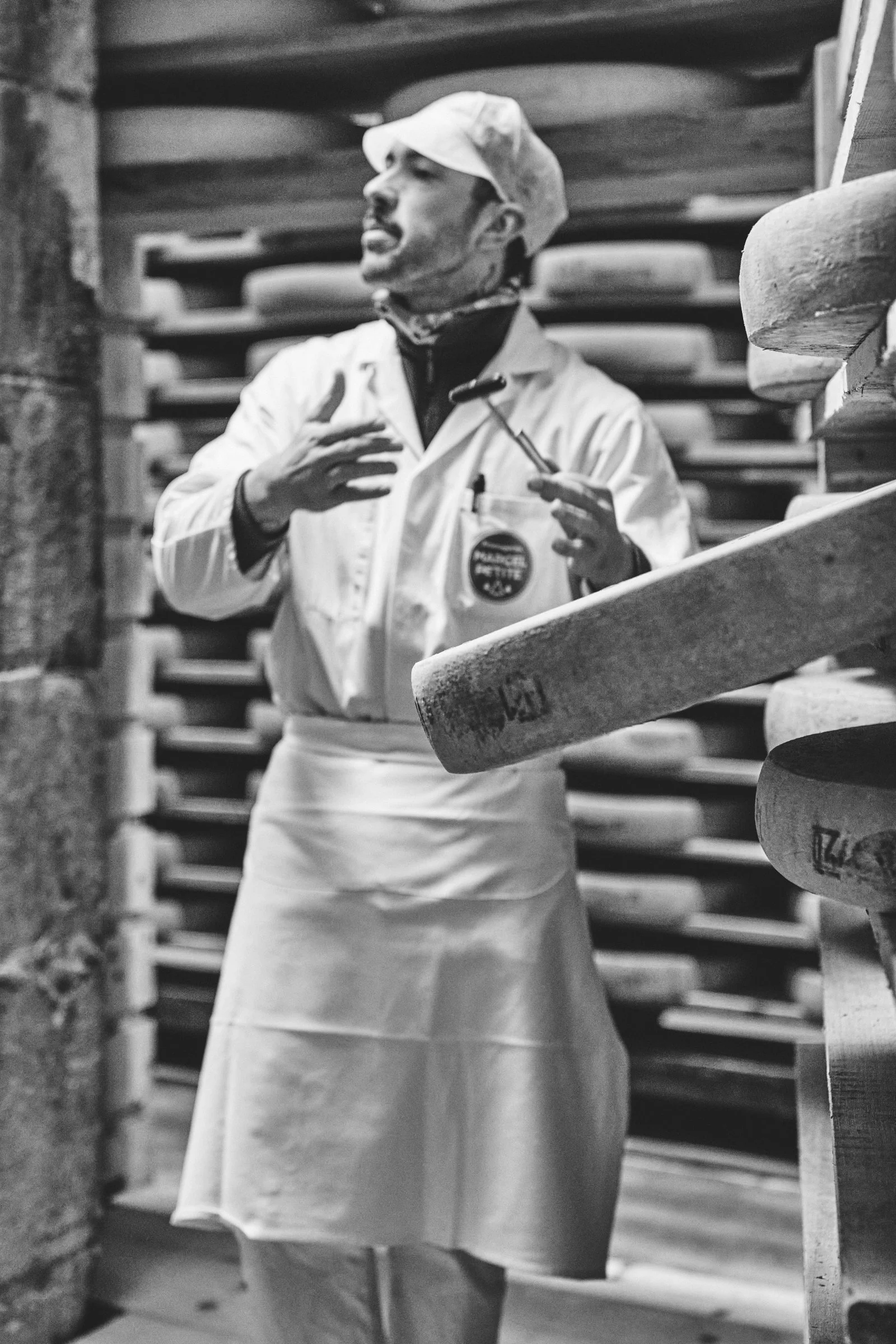Whispering cheese
Before she opened the door, she warned us that the aroma of ammonia would be strong. The aroma occurs naturally in the process of maturing cheese, but we had no idea that it would be so strong. I entered the cellar almost feeling disgust, yet I soaked it up for a while to get used to it, as if it was not there, because how could I care about something like that while standing in front of thousands and thousands of wheels of Comte maturing in the cellars of Fromageries Marcel Petite. Especially since the tour in the Comte cellars was the main reason for our visit to Jura that day.
We entered the cellars after spending two hours in the car, wandering the roads of Le Parc naturel régional du Haut-Jura and witnessing how the early morning rain gave way to the sun (read the full article here). I was more than ready to be in the world so dear to me - the cheese world. The caves built between 1879 to 1882 to protect the cheese are in Le Fort de Saint-Antoine, which was completely deserted in 1885. Only in 1966 did they become Comte cheese cellars for Fromageries Marcel Petite – 1100 m above sea level around 100 000 cheese wheels mature to be used, either sooner or later.
Marcel Petite, born in 1901, was a cheesemaker long before he took over this place, maturing as many as 500 wheels a year. He was a visionary who, despite the tradition then, started long cheese maturing at low temperatures.
After walking through the cellars where older cheese matured freely so that you can almost touch it (but can't), we moved forward to the cellars where younger wheels lay, captured in the closed environment, just beginning their way to maturation. The tour describing the making of Comte told us about milk and cow varieties, the production process and maturation, and the degustation of cheese but the part that followed was the most interesting because we witnessed how of the cheese masters explained (in a very active manner) the daily process of maturing the cheese and deciding their future. One thing is sure: lactose intolerance here is not in place.
There are many cheese masters working in these cold (+8 degrees and 95% humidity) cellars, testing around 300 wheels of cheese each day. It is not just by the look. It is a whole process in which an approximately 50 kg or a little less kilogram wheel (the mold holds about 447 l of milk) is lifted, taken halfway out, and slowly inspected with the eye and by tapping it with a special cheese hammer (sonde), checking for its qualities and defects as there are always some and those can be turned into effects.
The cheese is analyzed from the exterior and interior. On the surface by looking for anything suspicious such as crusting or some imperfections. Only then comes the texture of the "palate" – the comfort and taste in the mouth, the aromatic profile of cheese, and a process that no one can simply guess but must taste to understand. That's why each mold that leaves the shelves will be tasted at least once to be able to ensure consistency in the taste of the product.
That begins with an observation of the exterior. We need to be assured of its ripeness and accept that the mold will not change in size, color, smell, or form so there will be no visible differences - and these signs need to be found. And then comes the tapping part.
And then he started working. In the silence, he tapped the cheese, and we listened. Listened very carefully to hear something different. He inspected one side, finding nothing, and turned the wheel around like a small melon (it is 50 kg). He continued. One by one, covering the surface, listening carefully, when suddenly there was a different sound. The sound of emptiness detects a fracture inside the cheese that only happens when the cheese is ripe. That fracture hides a bit of gas, which means that the cheese has lost its elasticity, and that's exactly what cheese masters look for — something flexible and almost elastic, not a dense paste. Then, out of his pocket, a pen appeared, and he drew a cross and circle to mark the place, later cutting it open with a sonde. You could tell he had done this for years, as it was as easy as a summer breeze. After cutting, he took out that piece of cheese, looked at it, smelled and tasted it, and placed it back. And then he did the same with another wheel. There are times when there is no sound, but it still needs to be opened to see where the cheese is going as only after this process is it known what direction the cheese is going - to the grater or to the cellars to mature for 8, 12, or even more months. It is the cheese that whispers its destiny to the master's ear and mouth, not the other way around.
After an intense 30 minutes, the cheese is tested and tasted, and we are ready to leave with a cheese ripened for 12 months from the summer pastures of 2022. The best ones, in my mind, are the summer pastures that give that fresh flavor from the green grass, flowers, and all that is available in the meadows, but it's very different for everyone. Magazine and business owners like to come and taste, discovering all the aspects (taste, scent, and sight) before buying those wheels, as only by tasting can they understand how the cheese is. You need time for that - only when you concentrate on the look, smell, and how it breaks and feels in the mouth can you make the best choice.
So, when serving cheese, including Comte, let it stand at room temperature for at least 30 minutes. Only then does the fullness of the cheese appear. Only then will you understand the full spectrum that the cheese can give and discover notes from all the six big groups cheese has - milky, vegetal, fruity, spicy, roasted, and animal. They are present, and that's what makes this cheese so unique. That's what makes Comte Comte.
Milky - taste yogurt, cream and butter, milk
Vegetal - taste of peppers, tomatoes, fennel, plants
Fruity - from fresh to dried fruit, honey, or even flowers
Spicy - spicy notes and herbs
Roastiness - the sensation of eating roasted bread or brioche, up to heavily roasted such as chocolate, coffee
Animal notes - special, and they do exist
Visit the caves of Marcel Petite
Call to make a reservation: +33381491434
Visit for more information:
www.comte-petite.com
Follow for some cheese inspiration:
@fromageriesmarcelpetite


